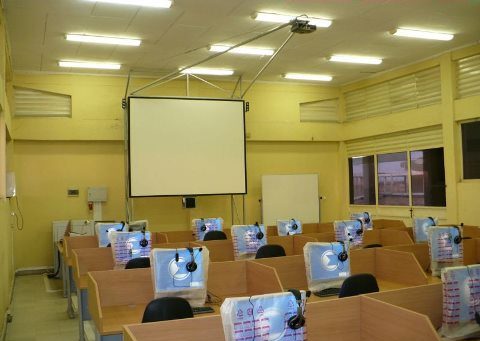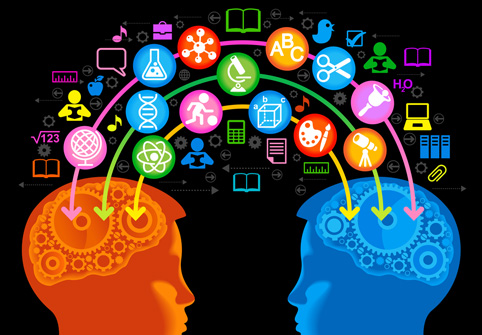ICTpost Education Bureau

A masterful instructor is not only a connoisseur of different teaching methods, but also an expert at knowing when to use appropriate teaching strategies for evidence-based achievement of desired learning outcomes.
In Education, multimedia is used to produce computer-based training courses (popularly called CBTs) and reference books like encyclopedia and almanacs. A CBT lets the user go through a series of presentations, text about a particular topic, and associated illustrations in various information formats. Edutainment is the combination of education with entertainment, especially multimedia entertainment.
Learning theory in the past decade has expanded dramatically because of the introduction of multimedia. Several lines of research have evolved (e.g. Cognitive load, Multimedia learning, and the list goes on). The possibilities for learning and instruction are nearly endless.
Business related to schools – from kindergarten to grade 12, or K-12 – focuses on selling technology loaded with curriculum-related content aimed at making classrooms more effective. This model has evolved from supplying computers to schools to installing interactive whiteboards which display content while allowing teachers to write on the screen with a stylus.
On an average, the cost per classroom is Rs 5,000 per month and if the whole school is to be digitised, it may cost about Rs 1 crore. Players see smaller towns going for overall digitisation, rather than single classroom digitisation. This is, inspite of the fact that the costs for the solutions, in small towns and big cities being the same. Three years back, schools in smaller towns were averse to the whole concept. Now atleast they are open to it.
There are close to 15 lakhs government schools and 1 lakh private schools in India. Out of this, only 7-10% of the private schools have tapped the potential of multimedia classroom teaching whereas in government schools, it has barely made any inroads. Private schools account for just seven per cent of total school capacity in India, but 40 per cent of students are enrolled in them. So, besides catering to private schools, companies seek to enter public-private partnerships via government programmes such as Sarva Shiksha Abhiyan.
Some whiteboards even let teachers gauge the effectiveness of a session. Each child has a remote and can click on options to questions, which shows the level of understanding of the subject.
7 Reasons to Use Multimedia in the Classroom
1.Facilitate and develop a community of learners through online ice-breaker activities. These activities offer fun and easy ways to get to know each other while also providing outlets for student creativity. A neat tool that works well for this is VoiceThread. Students can use a computer web-cam to record a video of themselves and view other students videos, all on one page.
2.Help students visualize difficult concepts or procedures more easily by using static or dynamic multimedia. Some efficient softwares allow you to quickly create visual handouts for learners. Teachers and students can use Jing software to record a screen shot or video, which produces a video tutorial or information about a website, embedding the video on their website or sending it to the student as an email attachment. These types of software provide a great way for teachers to make the most out of their multimedia and online resources.
3.Scaffold learning through activities enhanced by videos and online games. When assigning reading about an obscure historical event, you might want to create pre-reading activities by having students watch and comment on videos that fill in needed background knowledge. Searching for videos about events on Global Grid for Learning (GGfL), for instance, can provide needed support and add to a student’s gap in knowledge. Then you could embed these videos on your class website, blog, or wiki. Or have students add to a playlist as they locate more videos on the topic.
4.Make language and culture come alive through the viewing and creation of audio and video instruction. Students could view videos and television programs available online and stay up to date on current events in that country. They could also create their own videos and share them with another class, comparing cultural norms and addressing other questions through a group blog or wiki.
5.Enhance accessibility through the use of powerful multimedia software tools. Encourage students to use a speech-to-text tool to write their next essay or short story. This is especially helpful for students who have fine motor challenges or students who have trouble with keyboarding. Use auto-captioning features to create accessible multimedia for students with hearing challenges.
6.Enable visualization of concepts and their connections through collaborative construction and discussion of concept maps. CMap tools, a free, multi-platform software tool that can be downloaded to your computer. Students could work in groups, constructing a concept map and even recording within CMap tools this construction.
7.Encourage collaboration and feedback by integrating assignments with tools that support conversations and comments. For instance, have students post their slideshows and have them view their classmates presentations, and post comments. Or have students create video comments on video sharing sites such as TeacherTube. Use collaborative software such as blogs and wikis for students to easily create, edit, and publish their work. And make sure you provide information for parents to access these social media sites to see what their children are doing.
Challenges are also present in these markets, said industry players. Internet connectivity, to enable cloud solutions has been a major challenge. Getting the infrastructure down to these areas is another challenge cited by the players. But, the acceptance overshadows the challenge.







